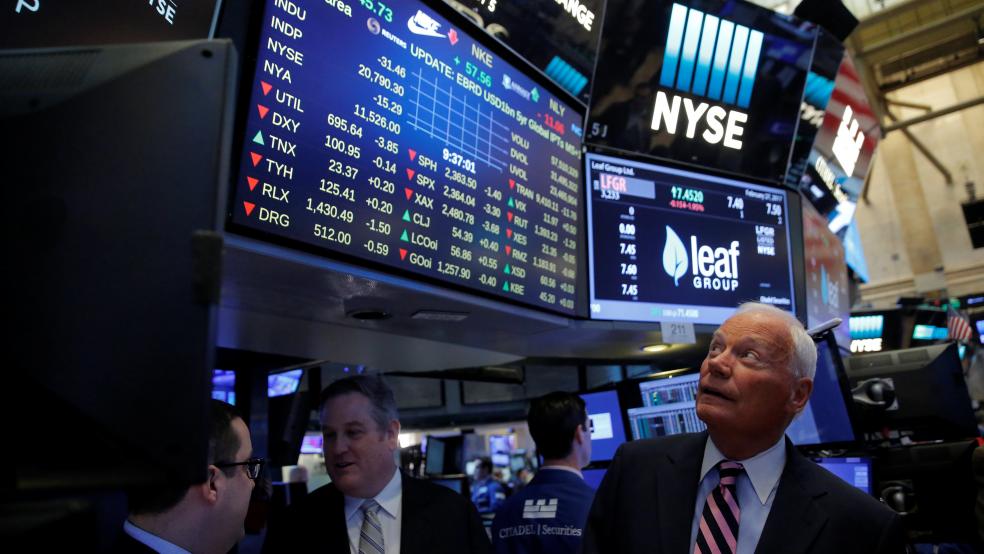The S&P 500 was heading for its biggest one-day tumble since September and shares extended losses through the day after reports of a memo by former FBI chief James Comey suggested that President Donald Trump tried to interfere with a federal investigation, setting off alarm bells on Wall Street.
Trump had asked Comey to end a probe into former National Security Adviser Michael Flynn's ties with Russia, the reports said.
Related: Are the Banks Flashing a Warning Sign for the Economy?
It was only the latest worry in a tumultuous week at the White House when Trump unexpectedly fired Comey and then disclosed classified information to Russia's foreign minister about a planned Islamic State operation.
The latest developments intensified worries about whether or when Trump will be able to implement proposals for business-friendly policies such as tax cuts and deregulation, which have underpinned a record-setting rally on Wall Street.
The three major Wall Street indexes hit session lows in late afternoon trading after the S&P 500 fell below 2369.23, its 50-day moving average.
"As the afternoon wears on and the market doesn't find support, sellers just pile on," said Ken Polcari, Director of the NYSE floor division at O’Neil Securities in New York who said he expected the market to fall further before the close.
Related: How Political Fireworks in Washington Could Singe the Market Rally
Bank stocks, which outperformed in the post-election rally, were the worst hit. The S&P 500 bank sub-sector .SPXBK was down 4.5 percent while the broader financial sector .SPSY sank 3.4 percent, led by a 6.2 percent decline in Bank of America (BAC.N) stocks and a 4 percent drop for JPMorgan (JPM.N).
"This is the unwinding of the Trump trade as people are losing any optimism he might get his agenda through," said Robert Phipps, director at Per Stirling Capital Management in Austin, Texas. "What's interesting is that the sell off is so small."
Both the Dow and the S&P 500 fell below their 50-day moving average for first time since late April. The S&P began the session by opening 0.74 percent lower, the largest gap down since March 30, 2009, when the index suffered a 0.84 percent drop at the start of trading.
At 2:49 p.m. EDT, the Dow Jones Industrial Average .DJI was down 347.56 points, or 1.66 percent, to 20,632.19, the S&P 500 .SPX had lost 40.55 points, or 1.69 percent, to 2,360.12 and the Nasdaq Composite .IXIC had dropped 146.00 points, or 2.37 percent, to 6,023.87.
The VIX .VIX, Wall Street's "fear gauge", shot up to 14.57, its highest level since April 21.
Eight of the 11 major S&P 500 sectors were lower.
The only gainers were utilities .SPLRCU, real estate .SPLRCR and consumer staples .SPLRCS sectors - so-called defensive stocks which often do well in times of uncertainty due to their predictable if slow growth and high dividend yields.
Declining issues outnumbered advancing ones on the NYSE by a 3.60-to-1 ratio; on Nasdaq, a 5.48-to-1 ratio favored decliners.
The S&P 500 posted 9 new 52-week highs and 19 new lows; the Nasdaq Composite recorded 25 new highs and 84 new lows.




